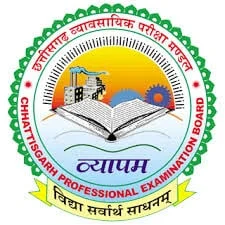CG PAT Syllabus

Complete Guide to the CG PAT Syllabus
The Chhattisgarh Pre-Agricultural Test (CG PAT) is a crucial examination for students aspiring to pursue undergraduate programs in agriculture and related fields in Chhattisgarh. The exam assesses candidates’ knowledge in various subjects related to agriculture, science, and mathematics. Understanding the detailed CG PAT syllabus is essential for effective preparation and achieving a high score.
Overview of the CG PAT Exam
The CG PAT is designed to evaluate students’ knowledge in science and agriculture. The exam typically includes multiple-choice questions (MCQs) covering a range of subjects, including Physics, Chemistry, Biology, and Mathematics.
Subjects Covered in CG PAT
The CG PAT syllabus is broadly divided into several subjects, each focusing on different aspects of science and mathematics relevant to agriculture. The key subjects include:
- Physics
- Chemistry
- Biology
- Mathematics
Each subject encompasses various topics that are critical for the exam. Here is a detailed breakdown of the syllabus for each subject:
Physics
The Physics section of the CG PAT tests students’ understanding of fundamental concepts and their ability to apply these concepts to solve problems. Key topics include:
- Mechanics: Laws of motion, work, energy, and power, gravitation, and properties of bulk matter.
- Thermodynamics: Heat, temperature, and thermodynamic processes, including laws of thermodynamics.
- Waves and Optics: Wave phenomena, sound waves, reflection, refraction, and optical instruments.
- Electromagnetism: Electric fields, magnetic fields, and electromagnetic induction.
- Modern Physics: Atomic models, radioactivity, and nuclear physics.
Preparation Tips:
- Review Basic Concepts: Focus on understanding fundamental principles and their applications.
- Solve Practice Problems: Regularly practice problems to enhance problem-solving skills.
- Use Visual Aids: Utilize diagrams and illustrations to understand complex concepts.
Chemistry
The Chemistry section assesses students’ grasp of chemical principles and their application in various scenarios. Important topics include:
- Physical Chemistry: Atomic structure, chemical bonding, thermodynamics, equilibrium, and kinetics.
- Inorganic Chemistry: Periodic table, chemical reactions, coordination compounds, and metallurgy.
- Organic Chemistry: Hydrocarbons, functional groups, reaction mechanisms, and organic synthesis.
- Biochemistry: Biomolecules, enzymology, and metabolic pathways.
Preparation Tips:
- Master Chemical Equations: Practice balancing and solving chemical equations.
- Understand Reaction Mechanisms: Focus on the mechanisms of various chemical reactions.
- Utilize Mnemonics: Use mnemonic devices to memorize key concepts and reactions.
Biology
The Biology section evaluates students’ knowledge of living organisms and their interactions with the environment. Key areas include:
- Botany: Plant anatomy, physiology, reproduction, and plant diseases.
- Zoology: Animal anatomy, physiology, reproduction, and classification.
- Ecology: Ecosystems, biodiversity, environmental issues, and conservation.
- Genetics: Principles of heredity, genetic disorders, and molecular genetics.
Preparation Tips:
- Use Diagrams and Charts: Study biological processes using diagrams and charts for better retention.
- Relate Concepts to Real Life: Connect theoretical knowledge with practical examples and applications.
- Revise Regularly: Regular revision helps in retaining complex biological processes and terminologies.
Mathematics
The Mathematics section tests students’ proficiency in mathematical concepts and problem-solving skills. Key topics include:
- Algebra: Polynomials, equations, inequalities, and matrices.
- Calculus: Limits, derivatives, integrals, and applications of calculus.
- Trigonometry: Trigonometric functions, identities, and equations.
- Coordinate Geometry: Straight lines, circles, conic sections, and coordinate systems.
- Statistics and Probability: Measures of central tendency, probability distributions, and statistical analysis.
Preparation Tips:
- Practice Regularly: Solve a variety of mathematical problems to build proficiency.
- Understand Formulas: Ensure a clear understanding of mathematical formulas and their applications.
- Use Online Resources: Utilize online tools and resources for additional practice and explanations.
Preparation Strategies for CG PAT
To prepare effectively for the CG PAT, consider the following strategies:
- Familiarize with the Syllabus: Understand the detailed syllabus and focus on the key topics for each subject.
- Create a Study Plan: Develop a structured study plan that covers all subjects and allows time for revision.
- Practice Previous Years’ Papers: Solve previous years’ question papers and sample papers to get an idea of the exam pattern and question types.
- Join Study Groups: Participate in study groups or forums to discuss concepts and solve doubts with peers.
- Seek Guidance: If needed, seek guidance from teachers or tutors for difficult topics.
CG PAT Exam Pattern 2024
Science Group
Duration : 180 Minutes
| S.No | Subject | No.of Question | Marks |
| 1 | Physics | 50 | 50 |
| 2 | Chemistry | 50 | 50 |
| 3 | Mathematics/Biology | 50 | 50 |
| Total | 150 | 150 |
Agriculture Group
Duration : 180 Minutes
| S.No | Subject | No.of Question | Marks |
| 1 | Elements of Science mathematics useful for Agriculture | 50 | 50 |
| 2 | Crop production and Horticulture | 50 | 50 |
| 3 | Elements of Animal husbandry and poultry farming | 50 | 50 |
| Total | 150 | 150 |
Conclusion
A thorough understanding of the CG PAT syllabus is crucial for effective preparation and success in the examination. By focusing on key subjects such as Physics, Chemistry, Biology, and Mathematics, and employing strategic study methods, students can enhance their chances of achieving a high score.

